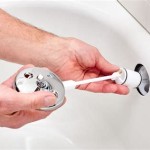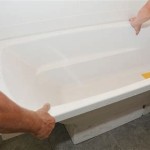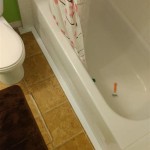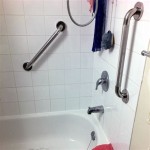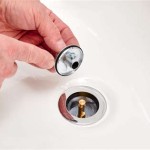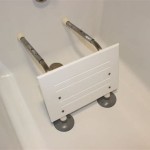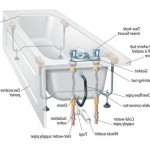How To Get An Elderly Person Into A Bathtub Safely and Comfortably
Bathing is an essential part of personal hygiene, and maintaining this routine is vital for the physical and mental well-being of elderly individuals. However, age-related conditions such as decreased mobility, muscle weakness, and balance issues can make getting into and out of a bathtub a challenging and potentially dangerous task. This article provides a comprehensive guide on how to assist an elderly person with their bathing routine, focusing on safety, comfort, and preserving their dignity.
Before attempting to assist an elderly person with bathing, a thorough assessment of their physical and cognitive capabilities is crucial. Understanding their limitations and needs will inform the approach and ensure the process is safe and comfortable. This assessment should ideally involve healthcare professionals, such as a physician or occupational therapist, who can provide specific recommendations based on the individual's condition.
This assessment should cover the following key areas: mobility, balance, strength, cognitive function, and any existing medical conditions that could impact the bathing process. Identifying potential hazards in the bathroom environment is also essential. These hazards might include slippery floors, inadequate lighting, and the absence of grab bars. Once these factors have been evaluated, a tailored plan can be developed to address the specific challenges and ensure a safe and comfortable bathing experience.
Key Point 1: Preparing the Bathroom Environment
The bathroom should be meticulously prepared to minimize risks and maximize comfort. This involves addressing potential hazards and creating a supportive environment that facilitates safe and easy access to the bathtub. A key element of this preparation is ensuring the bathroom is well-lit. Dim lighting can exacerbate vision problems and increase the risk of falls. Consider installing brighter overhead lighting or adding supplementary lighting, such as a strategically placed lamp.
Maintaining a comfortable room temperature is also important. Elderly individuals are often more sensitive to temperature changes, and a cold bathroom can be very unpleasant. Pre-heating the bathroom before the bath can significantly improve their comfort. Another essential aspect of bathroom preparation is ensuring the floor is non-slip. Use non-slip mats or rugs, especially in areas that are likely to get wet, such as around the bathtub and sink. Secure these mats to the floor to prevent them from sliding.
Clear any clutter from the bathroom floor to eliminate tripping hazards. This includes items such as toiletries, towels, and laundry baskets. Ensure a clear path to the bathtub is maintained. Gather all necessary bathing supplies within easy reach. This includes soap, shampoo, a washcloth, a towel, and any other personal care products the individual may need. Having these items readily available prevents the need to reach or stretch during the bath, reducing the risk of falls.
Finally, consider installing grab bars in strategic locations around the bathtub and toilet. Grab bars provide additional support and stability, making it easier for the elderly person to enter and exit the bathtub safely. Ensure the grab bars are securely attached to the wall and can support the individual's weight.
Key Point 2: Utilizing Assistive Devices
Assistive devices play a crucial role in facilitating safe and comfortable bathing for elderly individuals with mobility limitations. These devices can significantly reduce the risk of falls and injuries, and they can also help to preserve the individual's independence and dignity. A variety of assistive devices are available, each designed to address specific challenges related to bathing.
Bath benches and shower chairs are commonly used to provide a stable and comfortable seating surface inside the bathtub or shower. These benches and chairs allow the individual to sit while bathing, reducing the risk of falls and minimizing strain on their joints. Choose a bath bench or shower chair with non-slip feet and a backrest for added support. Transfer benches are particularly useful for individuals who have difficulty stepping over the bathtub wall. These benches have a seat that extends outside the bathtub, allowing the individual to sit down and then slide across into the tub.
Grab bars, as mentioned previously, are essential for providing support and stability. Install grab bars on the wall near the bathtub entrance and inside the tub to assist with entering and exiting. Bath lifts are another type of assistive device that can be used to lower and raise the individual into and out of the bathtub. These lifts are typically powered and can be operated by the individual or their caregiver. Bath lifts can be a very helpful solution for individuals who have significant difficulty moving or standing.
Long-handled sponges and brushes can help individuals reach areas of their body that they may not be able to reach on their own. These tools can promote independence and make bathing easier. Non-slip bath mats are essential for preventing slips and falls. Place a non-slip mat inside the bathtub and on the floor outside the tub. Before using any assistive device, ensure it is properly installed and in good working condition. Regularly inspect assistive devices for any signs of wear and tear, and replace them as needed.
Key Point 3: Providing Assistance with Dignity and Respect
When assisting an elderly person with bathing, it is essential to prioritize their dignity and respect. Bathing is a private and personal activity, and the individual may feel vulnerable or uncomfortable with assistance. Providing support in a sensitive and respectful manner can help to ease their anxiety and make the experience more pleasant. Before starting the bath, explain the process to the individual and ask for their consent. Allow them to participate in the bathing process as much as they are able and comfortable with.
Maintain privacy by closing the bathroom door and using a changing screen or curtain, if necessary. Use gentle and supportive language throughout the process. Avoid making assumptions or speaking in a condescending tone. Encourage the individual to express any concerns or preferences they may have. Offer choices whenever possible, such as the temperature of the water or the type of soap they would like to use. This can help to give them a sense of control and autonomy.
Protect the individual's modesty by using a towel or washcloth to cover their body while bathing. Only expose the areas of their body that need to be washed. Be mindful of the individual's physical limitations and provide assistance as needed. Avoid rushing the process and allow them to take their time. Observe the individual for any signs of discomfort or distress, such as pain, fatigue, or anxiety. If they experience any discomfort, adjust the process accordingly.
After the bath, assist the individual with drying off and dressing. Ensure they are warm and comfortable. Praise their efforts and thank them for their cooperation. Document any observations or concerns about the individual's physical or cognitive condition. This information can be shared with healthcare professionals to ensure they receive appropriate care. Remember that every individual is different, and the approach to assisting with bathing should be tailored to their specific needs and preferences. By prioritizing safety, comfort, and respect, one can help elderly individuals maintain their personal hygiene and quality of life.
Consider the water temperature carefully, ensuring it is warm but not too hot to avoid scalding. It is generally recommended to test the water temperature with an elbow or bath thermometer. A temperature between 100°F (38°C) and 104°F (40°C) is considered safe and comfortable for most elderly individuals. Always allow the individual to test the water temperature themselves to ensure it is comfortable for them.
If the elderly person has skin conditions, consult with a dermatologist regarding appropriate soaps and bathing practices. Certain soaps can be harsh and drying, exacerbating skin problems. Gentle, fragrance-free soaps are typically recommended. Avoid using hot water, which can also dry out the skin. Pat the skin dry gently with a soft towel instead of rubbing. Apply a moisturizer immediately after bathing to help lock in moisture and prevent dryness.
When assisting with washing, start with the face and hair, then move down the body. Pay particular attention to areas that are prone to skin breakdown, such as the groin, underarms, and between the toes. Use a soft washcloth and gentle circular motions to clean the skin. Rinse thoroughly to remove all soap residue. Be mindful of any open wounds or sores and avoid scrubbing them vigorously. If the elderly person is able, encourage them to participate in the washing process as much as possible.
Finally, always err on the side of caution. If feeling unsure about assisting with bathing, seek guidance from healthcare professionals. Occupational therapists can provide valuable advice on safe bathing techniques and assistive devices. Home healthcare aides can provide hands-on assistance with bathing, ensuring the elderly person receives the care they need while maintaining their dignity and independence.

Bathe On Your Own Again My Review Of The Maidesite Tub Lift

Ella S Bubbles Ultimate Walk In Bathtubs With Door Seat For Elderly Handicapped Luxurious

Bathe On Your Own Again My Review Of The Maidesite Tub Lift

How To Get An Elderly Person Bathe Griswold

Bath Transfer Bench With Audio Descriptions

5 Ways Seniors Can Get Free Walk In Tub Funding Benefits

How Often Should Seniors Bathe Ella S Bubbles Walk In Tubs

Freedom Walk In Transfer Tub 26 X 52 With Hydro Jets Left Drain

Home Safety Modifications For Seniors Assured Healthcare Staffing

How Bath Lifts Transform Daily Care For Seniors And Disabled Individuals Jiecang

